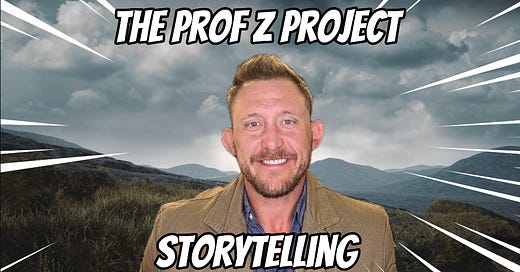Storytelling
You can have the best product, the strongest team, the sharpest strategy—but if you can’t tell a compelling story, none of it matters.
Because stories sell. They have for the history of mankind. For our modern business world, storytelling as a skill set can help you:
Attract talent.
Raise capital.
Build trust.
Scale ideas.
The best entrepreneurs don’t just pitch—they narrate. They turn products into brand people identity with. The story they tell themselves.
And the truth is, you don’t need to be a natural-born storyteller. Like any other leadership skill, it’s trainable. You just need the right tools.
Here are 10 storytelling frameworks every builder, founder, and leader should have in their back pocket.
1. The Hero’s Journey
We’re hardwired for this one. A relatable protagonist overcomes struggle, transforms, and returns changed.
Describing your own founder journey, your customer’s transformation, or your product’s origin.
2. The Before/After Bridge
People buy outcomes, not features. Selling change—especially in product demos or investor decks.
Structure:
Before: “Here’s the pain.”
After: “Here’s the paradise.”
Bridge: “Here’s how we get you there.”
3. Problem → Agitation → Solution (PAS)/
This type of storytelling triggers emotional urgency. You can use this when you are writing marketing copy or opening a pitch.
Structure:
Problem: “Managing subscriptions is a mess.”
Agitate: “You’re overpaying, missing cancellations, and getting nickel-and-dimed.”
Solution: “Our dashboard solves all of that with one click.”
4. The 5 Whys
To help peel back the surface to find root motivation, sometimes all you need to do is just keep asking why.
you can use this when you are doing customer discovery or refining your mission.
Example:
“Why do you want to build this?”
“To help people manage stress.”
“Why?”
“Because I’ve struggled with it myself…”
And so on.
5. Jobs to Be Done (JTBD)
Customers don’t buy products. They hire solutions. You don’t buy a quarter inch drill bit, you hire a the drill bit because you need a quarter inch hole. He hire a types of products and services to do a job for us.
Crafting messaging or understanding real-world use cases can help other people realize why they should hire your product to get the the right job done.
6. The Pixar Formula
It’s tight, emotional, and familiar. When explaining your startup’s journey or a customer case study, try the format that Pixar has perfected.
Structure:
“Once upon a time… Every day… Until one day… Because of that… Because of that… Until finally…”
7. Contrast Framing
Why it works: The brain processes differences better than features.
Use it when: Making your product stand out.
Example: “Unlike clunky enterprise software, ours is built for speed. Think Slack, not Salesforce.”
8. High-Stakes Stakes
People only act when something’s at risk. Fundraising, closing deals, or rallying teams all need the people involved to know what is at stake, otherwise they won’t care.
Ask: “What’s at stake if we don’t act?”
Make it visceral.
9. Analogy & Metaphor
It compresses complexity, but people overuse it—be original when you can.
A story using a metaphor can be helpful when explaining technical solutions or abstract ideas.
Example: “We’re the Airbnb for office space.
10. Founder’s Mythology
People don’t just buy what you do—they buy why you do it.
When you’re building a brand, culture, or cult-like following, you need to create a legend behind the brand.
Example: Jobs had the garage. Musk had the Zip2 payout. What’s your origin story?
Storytelling is important
Storytelling isn’t fluff. It’s the transmission mechanism for everything that matters in business—vision, values, persuasion, and purpose.
When you get it right, your message sticks. Your mission spreads. And your brand becomes more than just a logo.
So next time you pitch, sell, lead, or launch—don’t just share what you do.
Tell a story worth remembering.
Connect with Zach
Website • Twitter • LinkedIn • Youtube





